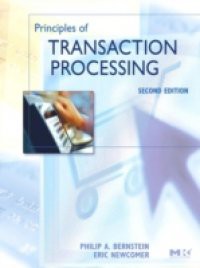Principles of Transaction Processing is a comprehensive guide to developing applications, designing systems, and evaluating engineering products. The book provides detailed discussions of the internal workings of transaction processing systems, and it discusses how these systems work and how best to utilize them. It covers the architecture of Web Application Servers and transactional communication paradigms. The book is divided into 11 chapters, which cover the following: * Overview of transaction processing application and system structure * Software abstractions found in transaction processing systems * Architecture of multitier applications and the functions of transactional middleware and database servers * Queued transaction processing and its internals, with IBM's Websphere MQ and Oracle's Stream AQ as examples * Business process management and its mechanisms * Description of the two-phase locking function, B-tree locking and multigranularity locking used in SQL database systems and nested transaction locking * System recovery and its failures * Two-phase commit protocol * Comparison between the tradeoffs of replicating servers versus replication resources * Transactional middleware products and standards * Future trends, such as cloud computing platforms, composing scalable systems using distributed computing components, the use of flash storage to replace disks and data streams from sensor devices as a source of transaction requests. The text meets the needs of systems professionals, such as IT application programmers who construct TP applications, application analysts, and product developers. The book will also be invaluable to students and novices in application programming.Complete revision of the classic "non mathematical" transaction processing reference for systems professionals. Updated to focus on the needs of transaction processing via the Internet-- the main focus of business data processing investments, via web application servers, SOA, and important new TP standards. Retains the practical, non-mathematical, but thorough conceptual basis of the first edition.

